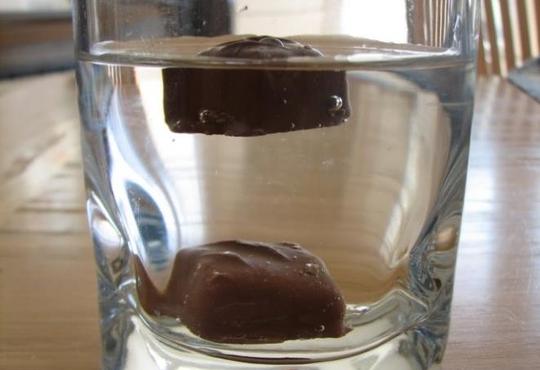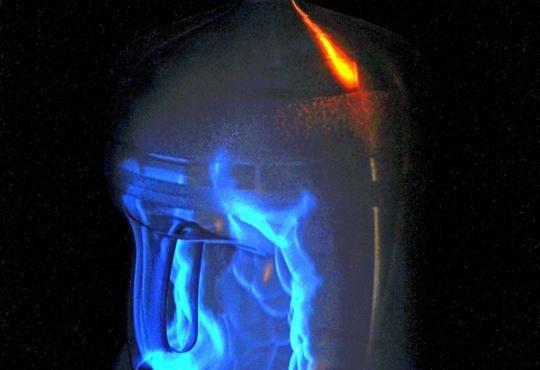- Re: “Don’t Mail Matches” by Michael P. Jansen, Chem 13 News, November 2014, page 3.
The methanol accident described by Mr. Jansen was actually years in the making. In my opinion these types of accidents are the direct result of the reduction in students’ exposure to handling chemicals due to the continued removal of chemicals and apparatus in the high school. These decisions are made by those “who know better” — the school trustees and supervisors. The problem with the “if there is an accident, ditch it” policy is that it creates more accidents. Students are no longer taught how to safely handle materials and equipment. Science teachers are the ones who should teach about each piece of equipment and chemical as it is introduced in a course. If they do not, students will end up in the real world with no training on how to handle materials safely. Do we really want students to handle chemicals and equipment in their home and in the workplace without any training? We are already into a generation of students who have not been allowed to handle certain materials.
When we consider removing methanol in the schools, it should be noted that it is available at hardware stores and is used in heating cans. Students and their parents could encounter methanol in the home. It is wise to have the community educated in how to handle methanol safely.
I also have to tell the story of the panic put into my former school’s caretaking staff. They had been told by safety experts from the school board not to mix cleaning products — even mixing two different detergents such as Palmolive and Ivory was to be considered hazardous. These same experts demanded that all household chemicals be removed from the school’s Science Departments — should we start with H2O?
A friend and an experienced chemistry teacher, told me this story of a first-year teacher who taught the introductory chemistry course at his school. It was decided to share lab and demo preparation. The teacher — fresh out of teachers college — said that all through high school, a university bachelor’s program and teachers college, students were never allowed to make their own solutions! There had been many problems done on paper about mixing solutions of various molarities, but this new teacher had no experience in preparing his own solutions. The experienced teacher then began lessons in solution making 101.
This brings up safety issues with respect to solution strength. I tested some labs for a new chemistry text and was told by the publishers and their safety advisers that students were not to handle solutions more concentrated than 0.10 mol/L. I pointed out to the editor that for solubility rule labs, the starting solutions should be 0.20 mol/L. This lab had 10 drops of each of the two solutions placed into the spot plate wells so that upon dilution, the final concentration would be 0.10 mol/L. This is the dividing line between “soluble” and “slightly soluble” salts. The safety advisor overruled me and stuck to 0.10 mol/L concentration. Now not only is the chemistry incorrect, but the experimental results will not necessarily be correct.
Do you really make students safer by setting an overarching rule for solution strength? There are problems with this approach. Some labs just do not work at a fast enough rate with only 0.10 mol/L solutions. As well, students come out thinking that hydrochloric acid or sulfuric acid is not that dangerous because they have worked only with 0.10 mol/L solutions. Accidents are waiting to happen when they encounter “muriatic acid” (HCl) at a hardware store (10 mol/L) or work with batteries containing 14 mol/L sulfuric acid.
The problem only worsens when teachers teach outside their areas of expertise. Chemistry teachers are asked to teach physics, biology teachers are asked to teach chemistry and physical education teachers are asked to teach biology. Without teachers with a strong chemistry background, there will be fewer labs and demos and therefore fewer chances to view and practice safe handling of chemicals and equipment. This could lead to more accidents and the further removal of chemicals available to high schools. Eventually, vinegar will be banned because it is an acid, and sodium bicarbonate will be banned because it may decompose releasing carbon dioxide into the atmosphere — potentially explosively.
A principal once told me that as a teacher we are led to believe that we should be able to teach any subject, and he had to staff the school according to that philosophy on many an occasion. However he — a math teacher — had to teach chemistry once and it was a disaster. Since then, he ensures chemistry is taught by someone who is a true chemist and chemistry teacher — not only a wise decision but a safe one.
Ken Lyle — page 6 and 7, (November) 2014, Chem 13 News issue — gives great advice about the importance in understanding the chemistry behind the demos. Ken emphasizes practice, practice, practice before you step into the classroom or conference presentation with the demo or lab — and know the safety considerations. David Cash’s thorough description of an acid-base lab — Acid-base titrations with citric acid: part 1, pages 16 – 18 — shows just how much knowledge and care must be taken.
It is the front-line teachers such as Mr. Jansen, Dr. Lyle and Dr. Cash, who should be consulted as to which chemicals, equipment, labs and demos should or should not be used in our schools. This is clearly illustrated when “experts” at our local school board ban tannic acid but still drink tea and coffee.







